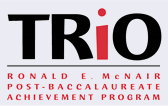Mentor
Nicholas Grossoehme, Ph.D.
Major
Chemistry
College
College of Arts and Sciences
Department
Chemistry, Physics and Geology
Funding
Research Corporation Grant-20160 and SC-INBRE
Abstract
The Nickel Uptake Regulator (NUR) is a metalloregulatory protein found in the microorganism Streptomyces coelicolor. S.coelicolor is a gram-positive bacterium that plays an important role in antibiotic production. NUR is responsible for the uptake of nickel and the regulation of the enzyme Superoxide Dismutase (SOD) within S.coelicolor. NUR regulates Fe-and Ni-SODs through direct and indirect transcription processes, respectively. The goal of this research is to purify and characterize the metal and DNA binding affinities in Wild Type (WT) NUR. There are two metal binding sites within NUR that is believed to contribute to the function of this protein. These sites are the M-site and the Ni-site; both sites are highlighted and enlarged in Figure 1. Our focus in characterizing this protein is to understand the distinct roles each specific metal binding site plays in NUR’s functionality. Using optimized purification strategies, we are able to successfully purify protein that is characterized by quantification of original metal content bound to NUR, metal binding affinity, and DNA binding affinity. One experiment, represented in Figure 2 below, shows a titration of NUR and DNA into a solution of a known metal chelator, Fura-2. This experiment presents evidence of our hypothesis that one M-site has a lesser affinity than the other for metal, and in order to remove the other metal, DNA must be bound to NUR. Other experiments will be performed to reproduce this data and give more information to help support this hypothesis.
Recommended Citation
Peppers, Denise and Grossoehme, Nick
(2015)
"Purification and Characterization of Nickel Uptake Regulator (NUR) and Single NUR Mutants from Streptomyces coelicolor,"
The Winthrop McNair Research Bulletin: Vol. 1, Article 12.
Available at:
https://digitalcommons.winthrop.edu/wmrb/vol1/iss1/12


